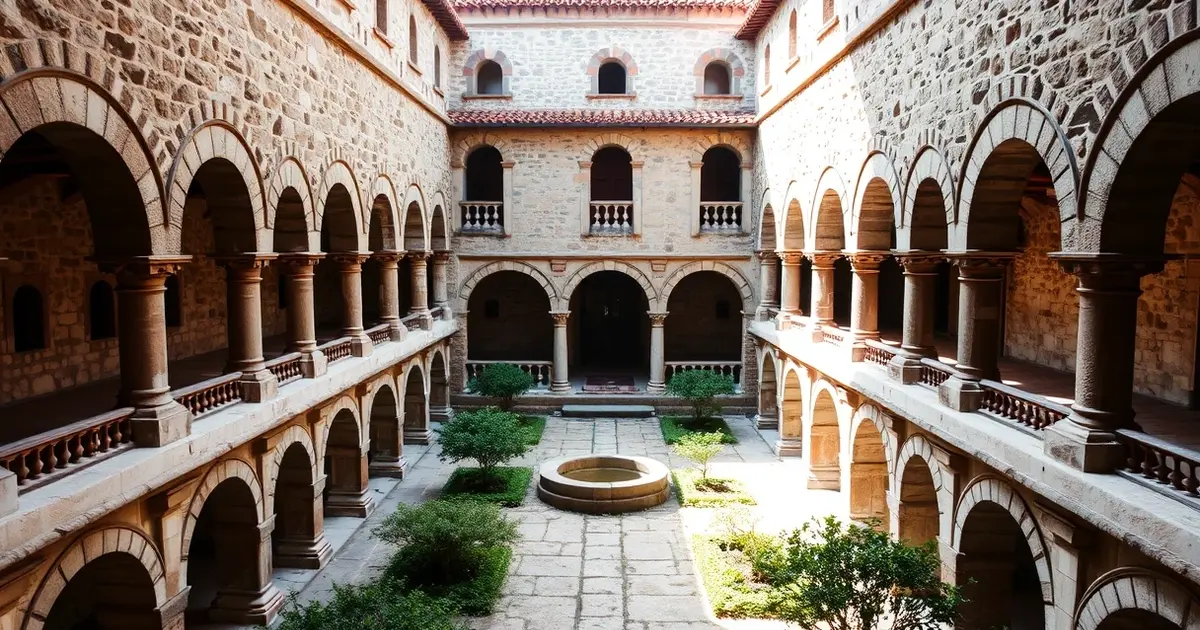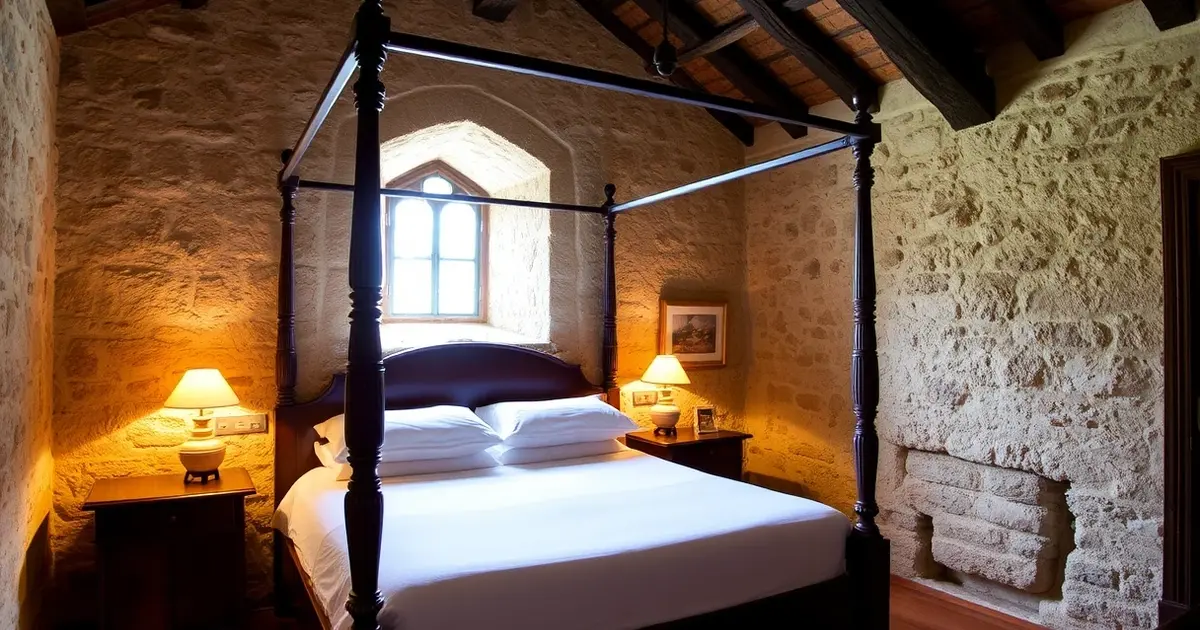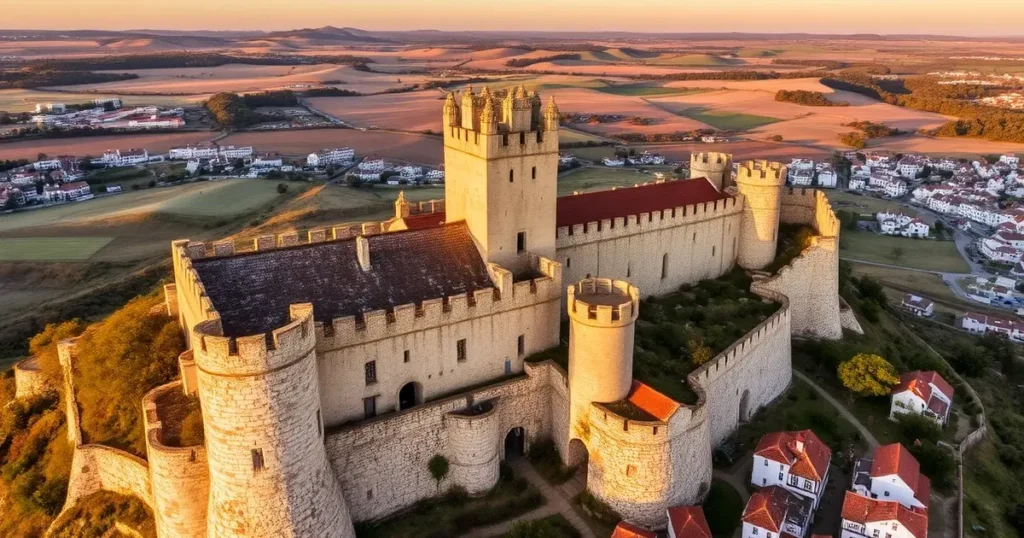In an era of standardized hotel experiences, Portugal offers a remarkable alternative—a network of historic buildings transformed into elegant accommodations while preserving their architectural and cultural significance. The Pousadas de Portugal program represents one of Europe’s most successful heritage conservation initiatives, allowing travelers to sleep in monasteries, castles, palaces, and fortresses that span nearly a millennium of Iberian history.
From Monastery to Luxury Hotel: The Birth of Pousadas

The concept of pousadas (roughly translated as “places of rest”) emerged in the 1940s as a government initiative to preserve historic buildings while creating tourism infrastructure. What began with a handful of properties has evolved into a network of over 40 historic accommodations, each with its own unique story and architectural significance.
Unlike many heritage hotels that simply occupy old buildings, Portugal’s pousadas operate under strict preservation guidelines. Original architectural elements must be maintained, modern additions must be distinguishable from historic structures, and each property must tell the story of its past through thoughtful interpretation.
This commitment to authenticity creates accommodations that function as both comfortable hotels and living museums. At Pousada Mosteiro de Amares, a 12th-century Cistercian monastery in northern Portugal, guests sleep in converted monk cells, dine in the former refectory, and wander cloisters where religious contemplation occurred for centuries.
The renowned Portuguese architect Eduardo Souto de Moura won the Pritzker Prize partly for his sensitive renovation of this monastery, demonstrating how thoughtful adaptive reuse can honor the past while creating spaces for contemporary needs.
Castles and Fortresses: Sleeping Within Medieval Walls

Perhaps the most dramatic pousadas occupy Portugal’s network of defensive structures—castles, fortresses, and walled towns that once protected the young nation’s borders. These massive stone edifices offer a tangible connection to Portugal’s turbulent history of independence struggles and territorial conflicts.
Pousada Castelo de Óbidos, perched within the crenellated walls of a 12th-century castle, provides one of the most authentic medieval experiences available to modern travelers. The castle’s strategic position overlooking the whitewashed town of Óbidos and surrounding countryside immediately conveys its historical importance.
Inside, stone corridors lead to rooms with vaulted ceilings, arrow slits, and massive wooden beams. Yet these historic spaces have been carefully adapted with modern comforts—heating systems concealed within thick walls, bathrooms discreetly incorporated into former storage areas, and lighting designed to enhance rather than detract from original features.
“The challenge is balancing preservation with comfort,” explains Maria Cardoso, a heritage architect who has worked on several pousada renovations. “We must respect the building’s soul while acknowledging that today’s travelers expect certain amenities. Each modification requires careful consideration of its impact on historical integrity.”
Palaces and Manor Houses: The Aristocratic Experience

While monasteries and fortifications represent Portugal’s religious and military heritage, the network also includes former palaces and manor houses that showcase the nation’s aristocratic past. These properties offer glimpses into the refined lifestyle of Portuguese nobility while providing some of the most luxurious accommodations in the pousada system.
Pousada Palácio de Estoi in the Algarve region exemplifies this category. This pink-hued 19th-century palace represents the exuberant Rococo style, with ornate plasterwork, frescoed ceilings, and formal gardens designed to impress. The building had fallen into disrepair before its sensitive conversion into a pousada preserved its extravagant architectural details while adding contemporary comforts.
What distinguishes these aristocratic pousadas is their connection to Portuguese domestic life. Unlike the more austere monasteries or utilitarian fortresses, these buildings were designed for comfortable living and entertainment. Original salons now serve as elegant public spaces, former libraries function as bars, and bedrooms occupy spaces where nobility once slept.
The furnishings in these properties deserve special attention, as many contain museum-quality antiques appropriate to their historical period. At Pousada Palácio de Queluz, adjacent to the National Palace of Queluz near Lisbon, rooms feature reproductions of 18th-century furniture based on pieces in the palace collection, creating a seamless historical experience.
The Culinary Heritage: Dining Through History

The pousada experience extends beyond architecture to encompass Portugal’s culinary heritage. Each property’s restaurant typically specializes in regional cuisine, often reviving historical recipes adapted for contemporary palates. This gastronomic approach transforms meals into cultural experiences that complement the historical accommodations.
At Pousada Mosteiro de Alcobaça, housed in a 12th-century Cistercian monastery, the restaurant serves dishes inspired by the monks’ historical cookbook. The famous “Doces Conventuais” (convent sweets)—egg-based desserts developed when monasteries had excess egg yolks after using whites for wine clarification and starching religious garments—feature prominently.
Similarly, pousadas in the Alentejo region showcase this area’s distinctive cuisine influenced by centuries of Roman, Moorish, and Christian traditions. Dishes like açorda (bread soup with coriander and garlic) and migas (bread crumbs fried with pork) represent culinary techniques developed during times of scarcity that have evolved into regional specialties.
The dining spaces themselves often occupy historically significant rooms—former refectories, chapter houses, or grand halls—where the architectural context enhances the culinary experience. At Pousada Castelo Palmela, diners enjoy regional wines in a vaulted space where knights once gathered, creating a multisensory connection to Portuguese heritage.
Beyond Accommodation: Living Museums

What truly distinguishes Portugal’s pousadas from other heritage hotels is their function as interpretive spaces. Most properties include historical information about the building’s original purpose, architectural significance, and place in Portuguese history. Some offer guided tours, historical reenactments, or cultural programs that deepen visitors’ understanding.
Pousada Convento de Évora, housed in a 15th-century monastery in the UNESCO World Heritage city of Évora, exemplifies this approach. The property maintains a small museum displaying archaeological findings uncovered during renovation, original architectural elements that couldn’t be incorporated into the hotel design, and information about monastic life.
This educational dimension transforms a stay from mere accommodation into cultural immersion. “We don’t want guests to simply sleep in a historic building,” explains João Rodrigues, a pousada manager. “We want them to understand why these buildings matter, how they functioned originally, and their significance to Portuguese identity.”
Sustainable Preservation Through Tourism

Perhaps the most remarkable aspect of the pousada program is its sustainability model. By adapting historic buildings for tourism, Portugal has created economic incentives for preservation. Buildings that might otherwise fall into disrepair now generate revenue that supports their maintenance while creating employment in often rural or economically challenged regions.
This approach represents a viable alternative to the common dilemma facing historic preservation: buildings without economic purpose often face neglect or demolition, while excessive commercialization can destroy the very qualities that make historic structures significant.
The pousada model demonstrates how thoughtful tourism can serve conservation goals. Visitors’ fees directly support building maintenance, staff members often include local residents with knowledge of regional history and traditions, and the properties’ prestige raises awareness about Portugal’s architectural heritage.
For travelers seeking authentic connections to local culture through accommodations, explore our article on Slovenia’s eco-friendly lodging options, where sustainable tourism similarly preserves both natural and cultural heritage.
Address Book:
•Pousada Mosteiro de Amares: Santa Maria do Bouro, Amares (12th-century Cistercian monastery)
•Pousada Castelo de Óbidos: Castelo de Óbidos, Óbidos (medieval castle within walled town)
•Pousada Palácio de Estoi: Rua São José, Estoi, Faro (19th-century Rococo palace)
•Pousada Convento de Évora: Largo Conde Vila Flor, Évora (15th-century monastery in UNESCO city)

